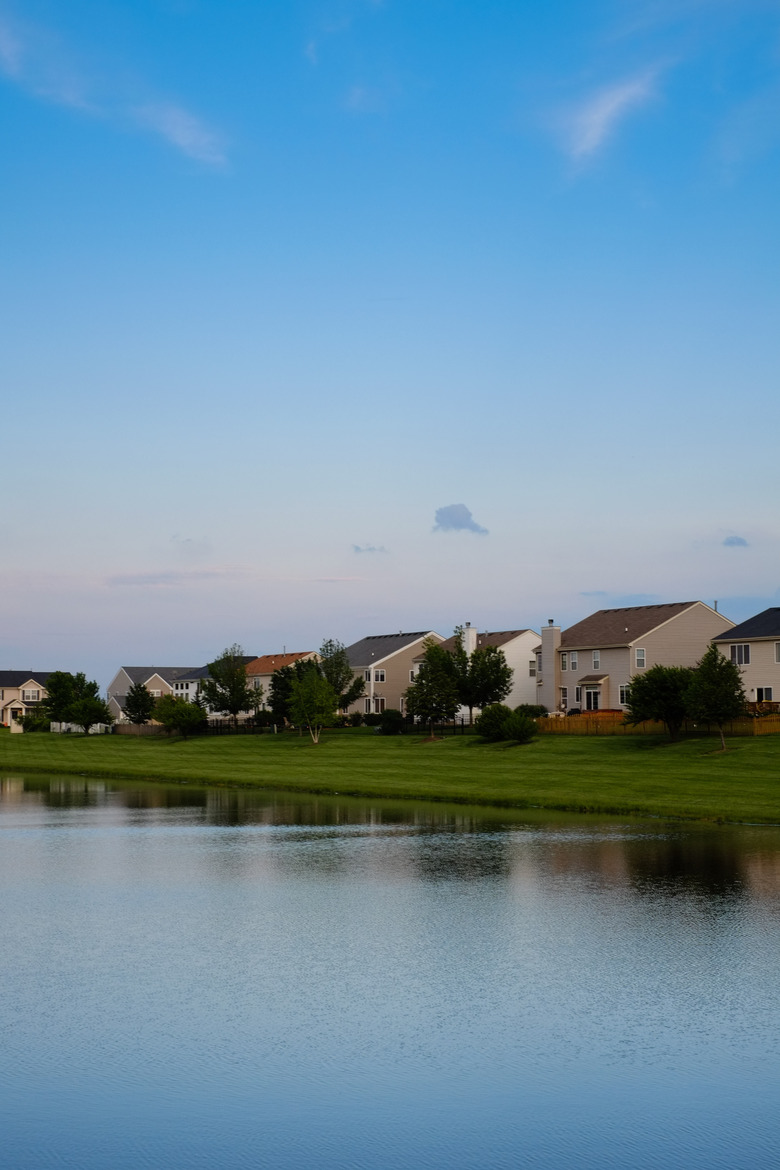What Is A Zoning Variance And How Do I Obtain One?
A variance is an approved exception to a zoning law. Zoning laws are rules enforced by cities, towns or municipalities that control building projects and land use on residential and commercial property. These laws govern almost any outward change you might make to your house or property, such as building or enlarging a deck, putting up a fence, erecting a shed, installing a pool, or adding on to your house. Zoning approval also is required for any new construction on undeveloped land.
On many projects, zoning approval is required before you can obtain a building permit. If your plans don't conform to the local zoning regulations, it may be possible to apply for a _variance_—a specific exception to one or more aspects of your plan—that allows you to gain approval for construction. Obtaining a variance is done through the local zoning board or planning commission and involves submitting an application and, in most cases, gaining approval at a hearing. Each municipality has its own rules and processes.
Zoning Laws vs. Building Codes
Zoning Laws vs. Building Codes
Generally speaking, zoning laws deal with anything added to your property or any change to the size or height of your house. Building codes are rules that govern how a project is done, whether it's inside the house or in the backyard. If you want to pop the top of your garage to add a mother-in-law apartment, for example, the project as a whole will fall under zoning regulations, while all of the work done (and the specific materials and techniques used) are subject to the building code rules. If you're just remodeling your kitchen—with no outward change to the house—you probably won't need zoning approval, but the entire project must comply with the building codes.
Looking at it another way, zoning regulations concern community issues and land use: the local environment, emergency response, water runoff, your neighbors, etc. Building codes are there to ensure proper construction methods.
Common examples of residential zoning regulations include:
-
How much you can build on your property. Many areas have
zoning laws that limit the percentage of land on an individual lot that can be developed, whether
it's with a house, an outbuilding or a driveway or patio. -
Setback rules. Setbacks are no-build zones that usually run
along the perimeter of residential lots. For example, you may need to keep a
garden shed at least 3 feet from your property line. -
Easements or rights-of-way. Easements or rights-of-way are
also no-build zones, but these are corridors that must be left open for public
or emergency access, sort of like an imaginary alley between properties. -
Water protection. If your property has natural water (river,
creek, lake, pond, etc.) or significant storm drainage areas, chances are you
cannot build within a certain distance of the water's edge. -
Septic systems. Septic systems and their drainage fields may
be closely governed by zoning laws, particularly in semi-suburban areas. -
Size and placement of structures. Houses, fences, garages
and other structures are commonly restricted in size and height, as well as
where they can appear on a property. These laws typically are designed to protect
the neighboring properties from structures that are imposing or inappropriately
large for the given area.
Why Obtaining a Variance is Better Than Breaking the Law
Why Obtaining a Variance is Better Than Breaking the Law
There are plenty of cautionary tales of homeowners ignoring zoning laws and proceeding with construction on their land, only to face stop-work orders and possible removal of said construction. If you don't think the city has the power to make you move your fence (or even your house) that's violating zoning laws, think again. For the same reason, it's very risky to bypass obtaining a building permit for any structure that requires one. You can easily run afoul of the local zoning laws and/or building code and can be forced to tear down what you've already built. If you're working with a contractor or builder who is obtaining a permit for you, make sure you have the permit in-hand before construction starts.
Tips for Obtaining a Variance
Tips for Obtaining a Variance
Because every municipality has its own process and requirements for zoning variances, the first step to obtaining a variance is to contact the proper local building authority. You can simply pick up the phone and call your city office. Getting in contact with the right people early on is also one of the key tips to obtaining a variance: It shows that you're interested in following the rules and the proper channels as a member of your community. Other tips include:
-
Review a variance application form. You can learn a lot about variance requirements by reviewing
a zoning variance application, which you can usually download from the city's
website. The same website also is likely to offer a downloadable document
detailing the zoning ordinance (set of rules) for your area. -
Consult an experienced local contractor or architect, who can help with many aspects of obtaining a variance, from planning your project
so that the variance request isn't unreasonable (and therefore likely to be
approved) to using the most effective language and arguments on your variance
application. Local building and design pros who are familiar with your city's
laws offer a big advantage over flying blind into the process. -
Discuss your plans with your neighbors. Variance review
boards often talk to immediate neighbors to gauge their feelings about a
proposed project. If the neighbors don't like the plan, this could kill your
chances. Discussing your project before you apply for the variance is the best
way to get your neighbors on board before they hear from the zoning board. This
also gives neighbors a chance to share concerns about your project and gives
you the opportunity to dispel their concerns or perhaps accommodate them with a
compromise. -
Attend zoning board meetings. If you can sit in on a board
meeting or variance hearing, it can offer valuable exposure to the process and
the language of zoning rules. This is also a great opportunity to meet zoning board
members who might end up making a decision in your case. -
Consult a lawyer for really tough or complicated cases. This is an expensive option and typically not necessary for ordinary
residential projects, but a lawyer with experience in similar cases can be
worth it if you're up against formidable opposition to your plans. In most
other tricky cases, an architect familiar with the local rules is a more
cost-effective option.



